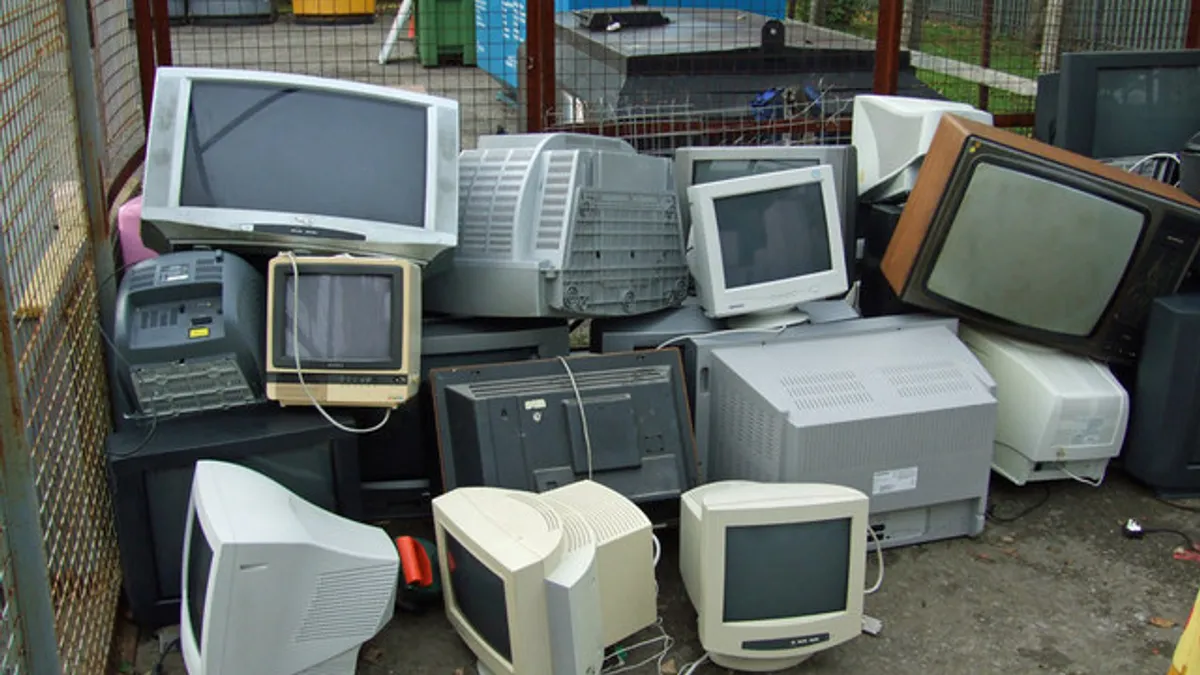Dive Brief:
- Wisconsin's Department of Natural Resources reported that 32.4 million pounds of electronics were collected for recycling through the state's program between July 2015 and June 2016. This marked an increase from the previous year, though was still below the 2011-2012 peak of 39.1 million pounds, as reported by Resource Recycling.
- This change was attributed to a decrease in CRT devices being dropped off, though televisions of various types continue to be the dominant item at 61% of total weight collected. The amount of cell phones being stored in homes jumped since it was last recorded in 2013 and the report estimates that more than half of the phones are no longer in use.
- The report recommends changing the definition of covered products to include phones, photo printers, portable DVD players and other similar items to increase collection opportunities. Other recommendations include "changing the manufacturer target formula so that the aggregate target is based on the total weight of electronics received for recycling under the program during previous years," and changing incentives to focus more on rural areas.
Dive Insight:
Since it began in 2010, E-Cycle Wisconsin has collected an estimated 225 million pounds of material and is seen as one of the more stable state programs currently operating. The state attributes some of its success to ongoing enforcement efforts and coordination with other states. Manufacturers are required to participate, and many do, but the weight-based targets means that more material has still been available for collection every year so far.
Like many other states, Wisconsin has also been struggling to manage CRT units which continue to make up the majority of tonnage collected even as that number continues to decrease. Glass-to-glass furnaces used to be the primary end market for the leaded glass from these units, but the state reports that has dropped off since 2014. Tile manufacturing is now the largest end market, followed by smelting and use in construction materials.
Finding ways to bring in more quality tonnage such as phones or other small devices could help offset some of the CRT processing costs, though based on the experiences in other states this imbalance can be expected to continue in the short term. As the climate for new e-waste legislation continues to be unfavorable in many states, it will be important for the ones that already have laws to make them work rather than let them get outdated and face potential repeal.















